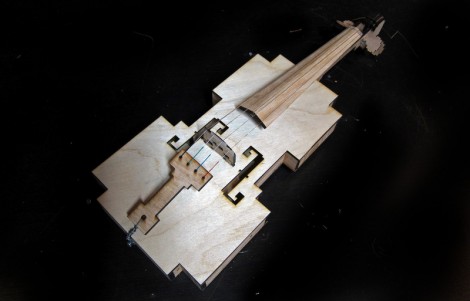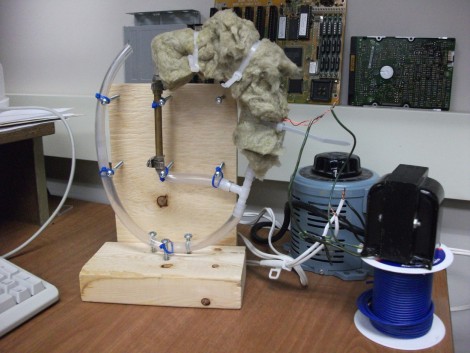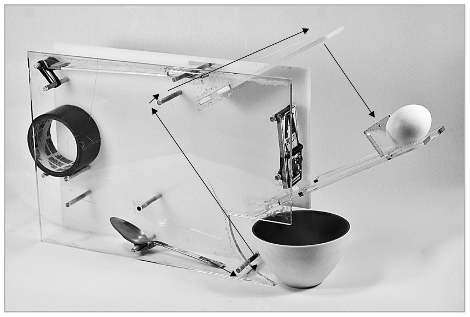
This looks very much like a violin but it sounds very much like someone abusing a family of cats. [Ranjit] came with the idea of building a violin using laser cut parts. It doesn’t follow the normal curved shape we’re used to seeing with string instruments. This is because the parts were all cut from flat stock, including the sides of the instrument. The boxy shape that resulted invokes visions of early video game objects and is why this is called the 8-bit violin.
After the break you can see a video of [Bre Pettis] playing the laser-cut instrument. It’s pretty bad, but not in that five-year-old picking up an instrument for the first time sort of way. Yes the best violinists spend a lifetime honing their craft, but they also play on instruments hand carved by master Luthiers who also spend a lifetime perfecting their skills. Don’t get us wrong though, we think it’s just as much fun as that 3D printed guitar.















